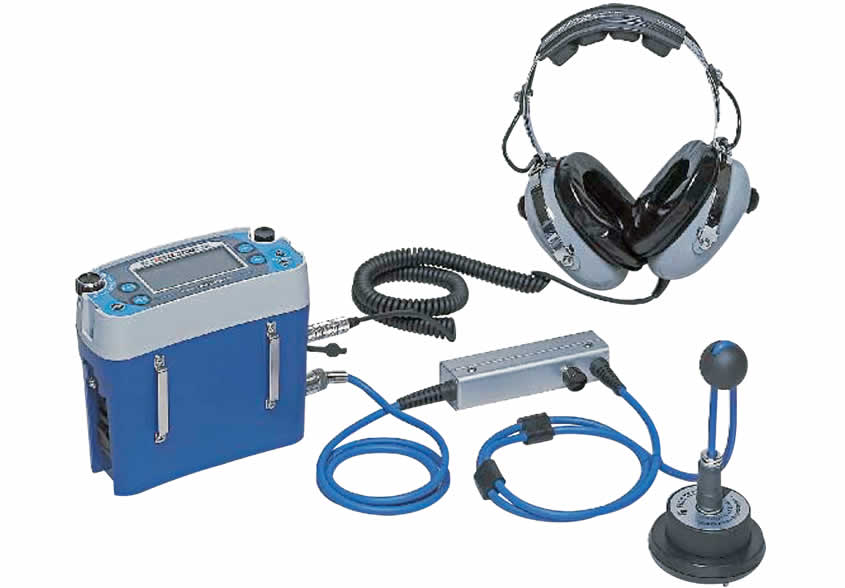Ingenious Solutions for Very Early Detection of Water Leakages in Buildings and Framework
From innovative leakage discovery technologies to the deployment of IoT sensors for real-time tracking, the landscape of leak prevention is progressing swiftly. Automated water circulation evaluation systems are improving how leaks are determined and attended to, leading the method for a positive technique to water leak detection.
Advanced Leakage Discovery Technologies
Advanced leakage detection innovations, geared up with innovative sensors and algorithms, play a critical duty in promptly recognizing and determining water leakages in different setups. These innovations utilize a mix of acoustic, thermal, and electro-magnetic picking up techniques to find leaks accurately. Acoustic sensing units discover the noise of leaving water, allowing for precise localization of the leakage resource. Thermal imaging discovers temperature changes triggered by water leakage, giving an additional efficient method for leakage recognition. Electromagnetic sensors can identify changes in electro-magnetic fields triggered by water, supplying yet one more layer of leakage detection capacity.

IoT Sensors for Real-Time Surveillance
In the realm of contemporary water leak discovery, the assimilation of IoT sensors for real-time surveillance stands for a pivotal development in improving aggressive leakage discovery capabilities. These sensors supply continuous monitoring of water systems, offering real-time data on water circulation prices, stress variants, and temperature level adjustments. By leveraging IoT technology, these sensors can find also the tiniest abnormalities in water use patterns, making it possible for early identification of potential leaks prior to they rise right into significant concerns.
IoT sensors transfer data to a centralized system, where sophisticated algorithms evaluate the information and generate alerts or notifications when irregularities are detected. This real-time monitoring capacity permits homeowner or center supervisors to promptly deal with leakages, decreasing water damage, lowering repair prices, and preserving water sources.
Furthermore, IoT sensors can be integrated with building monitoring systems, enabling automatic reactions to spotted leaks, such as closing off water valves or activating pumps to minimize the effect of leaks. Overall, the execution of IoT sensors for real-time monitoring dramatically improves the efficiency and performance of water leakage detection in structures and infrastructure.
Machine Discovering Algorithms for Leak Forecast

One trick advantage of using artificial intelligence for leak prediction is its capacity to constantly learn and improve its precision in time. As more information is collected and fed right into the algorithm, it can improve its forecasts and adapt to transforming conditions, inevitably boosting the reliability of leakage detection systems.
In addition, artificial intelligence formulas can help in recognizing subtle indicators of leaks that might go unnoticed by typical monitoring methods. water leak detection. By evaluating complex Click This Link information collections in real-time, these formulas can supply very early warnings and signals, permitting punctual intervention and precautionary upkeep to reduce possible water damage and connected prices
Making Use Of Thermal Imaging for Leak Discovery
Thermal imaging modern technology supplies a promising approach for discovering water leakages in different systems and facilities. By using infrared radiation and temperature level differences, thermal imaging cameras can identify covert leaks that are not quickly visible to the naked eye.
One of the essential advantages of thermal imaging for leakage discovery is its non-intrusive nature. Unlike traditional techniques that might need breaking right into walls or floors to find leaks, thermal imaging enables non-destructive testing. This not only conserves time and lowers prices however also reduces disruption to the structure or framework being analyzed. Furthermore, thermal imaging can rapidly scan large locations, providing an extensive overview of possible leakage sources in a timely manner. Generally, the use of thermal imaging modern technology boosts the effectiveness and accuracy of water leakage discovery, making it an important tool for keeping the stability of buildings and facilities.
Automated Water Flow Evaluation Systems
Just how can computerized water flow evaluation systems transform the discovery and management of leakages in various systems and facilities? Automated water flow analysis systems use an aggressive technique to leakage detection by continually keeping track of water circulation rates and patterns. By establishing standard data, these systems can swiftly recognize variances that might indicate a leakage, making it possible for prompt intervention to avoid substantial damage.
These systems utilize advanced formulas to assess real-time data and supply immediate notifies when abnormalities are spotted, enabling for speedy action to be taken. Additionally, automatic water circulation analysis systems can be integrated with structure administration systems or IoT systems, boosting overall efficiency and allowing remote surveillance capacities.
Moreover, the information gathered by these systems can be utilized for predictive maintenance purposes, helping to identify potential weak points in the infrastructure prior to leakages take place. Generally, the application of automatic water flow analysis systems can significantly improve leakage discovery and monitoring methods, eventually leading to set you back financial savings, minimized water waste, and boosted sustainability in buildings and facilities.

Conclusion
Finally, the combination of sophisticated leak detection technologies, IoT sensors, maker learn the facts here now discovering formulas, thermal imaging, and computerized water circulation evaluation systems uses ingenious options for early detection of water leaks in buildings and infrastructure. These technologies enable real-time monitoring, prediction of leakages, and reliable discovery techniques to avoid water damage and wastefulness. Implementing these remedies can aid in keeping the stability and sustainability official website of water systems in various setups.